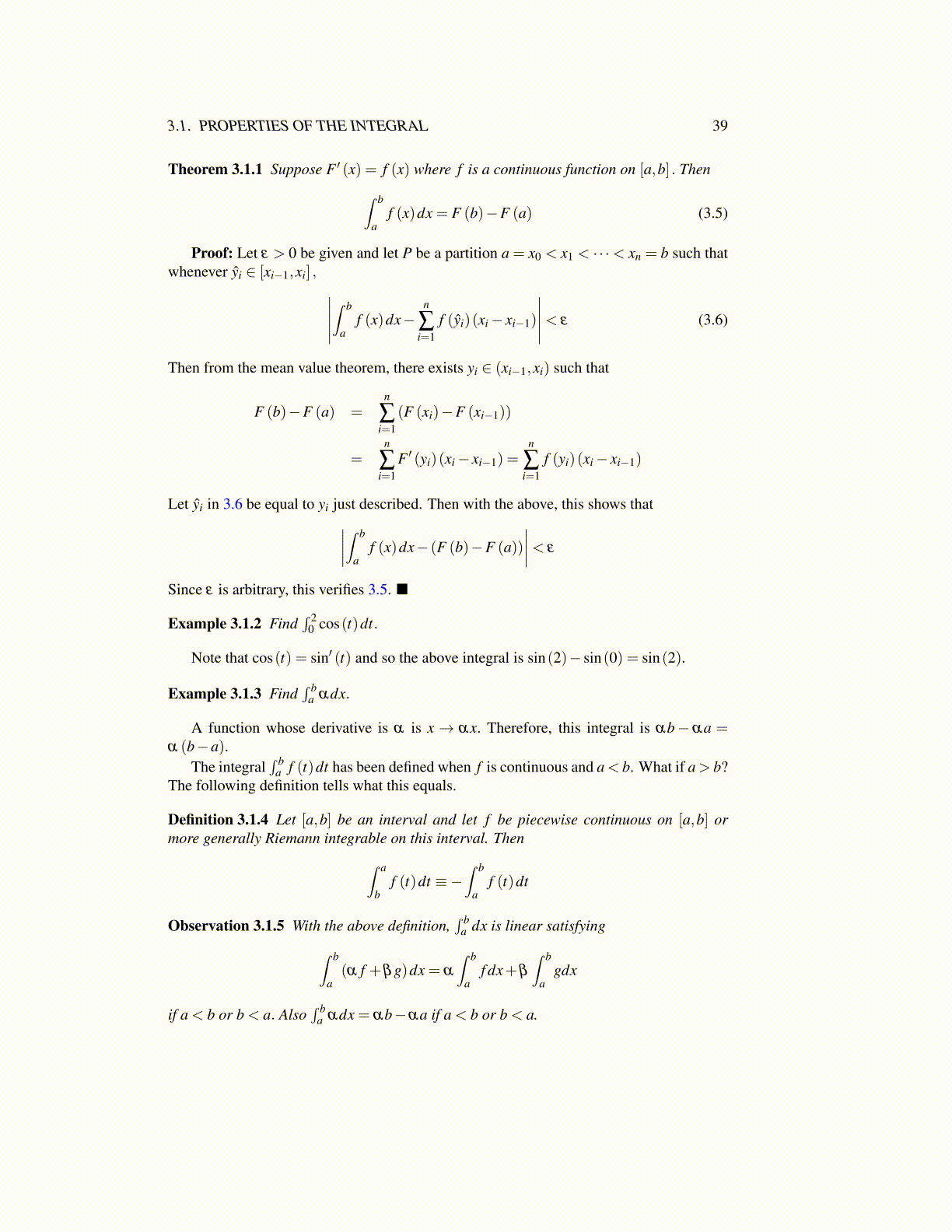
3.1. PROPERTIES OF THE INTEGRAL 39
Theorem 3.1.1 Suppose F ′ (x) = f (x) where f is a continuous function on [a,b] . Then∫ b
af (x)dx = F (b)−F (a) (3.5)
Proof: Let ε > 0 be given and let P be a partition a = x0 < x1 < · · ·< xn = b such thatwhenever ŷi ∈ [xi−1,xi] , ∣∣∣∣∣
∫ b
af (x)dx−
n
∑i=1
f (ŷi)(xi− xi−1)
∣∣∣∣∣< ε (3.6)
Then from the mean value theorem, there exists yi ∈ (xi−1,xi) such that
F (b)−F (a) =n
∑i=1
(F (xi)−F (xi−1))
=n
∑i=1
F ′ (yi)(xi− xi−1) =n
∑i=1
f (yi)(xi− xi−1)
Let ŷi in 3.6 be equal to yi just described. Then with the above, this shows that∣∣∣∣∫ b
af (x)dx− (F (b)−F (a))
∣∣∣∣< ε
Since ε is arbitrary, this verifies 3.5. ■
Example 3.1.2 Find∫ 2
0 cos(t)dt.
Note that cos(t) = sin′ (t) and so the above integral is sin(2)− sin(0) = sin(2).
Example 3.1.3 Find∫ b
a αdx.
A function whose derivative is α is x→ αx. Therefore, this integral is αb−αa =α (b−a).
The integral∫ b
a f (t)dt has been defined when f is continuous and a< b. What if a> b?The following definition tells what this equals.
Definition 3.1.4 Let [a,b] be an interval and let f be piecewise continuous on [a,b] ormore generally Riemann integrable on this interval. Then∫ a
bf (t)dt ≡−
∫ b
af (t)dt
Observation 3.1.5 With the above definition,∫ b
a dx is linear satisfying∫ b
a(α f +βg)dx = α
∫ b
af dx+β
∫ b
agdx
if a < b or b < a. Also∫ b
a αdx = αb−αa if a < b or b < a.